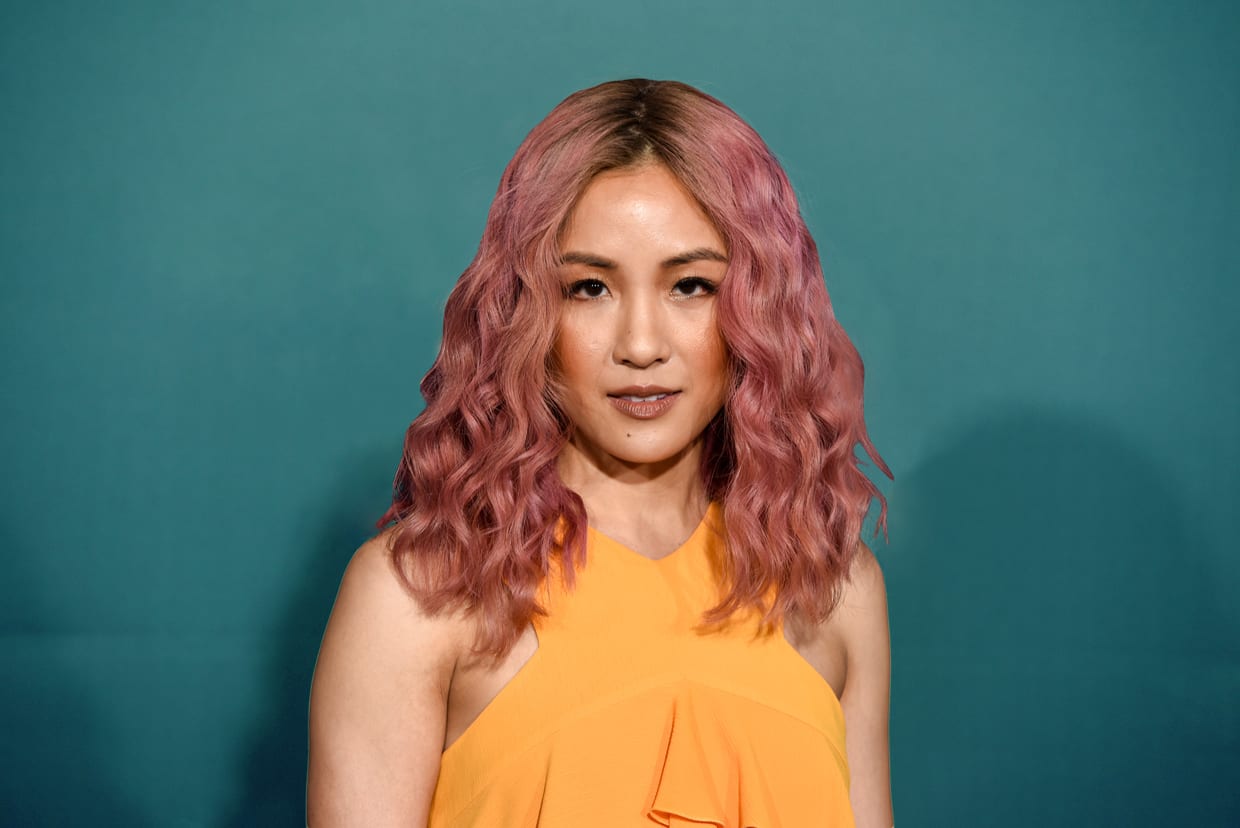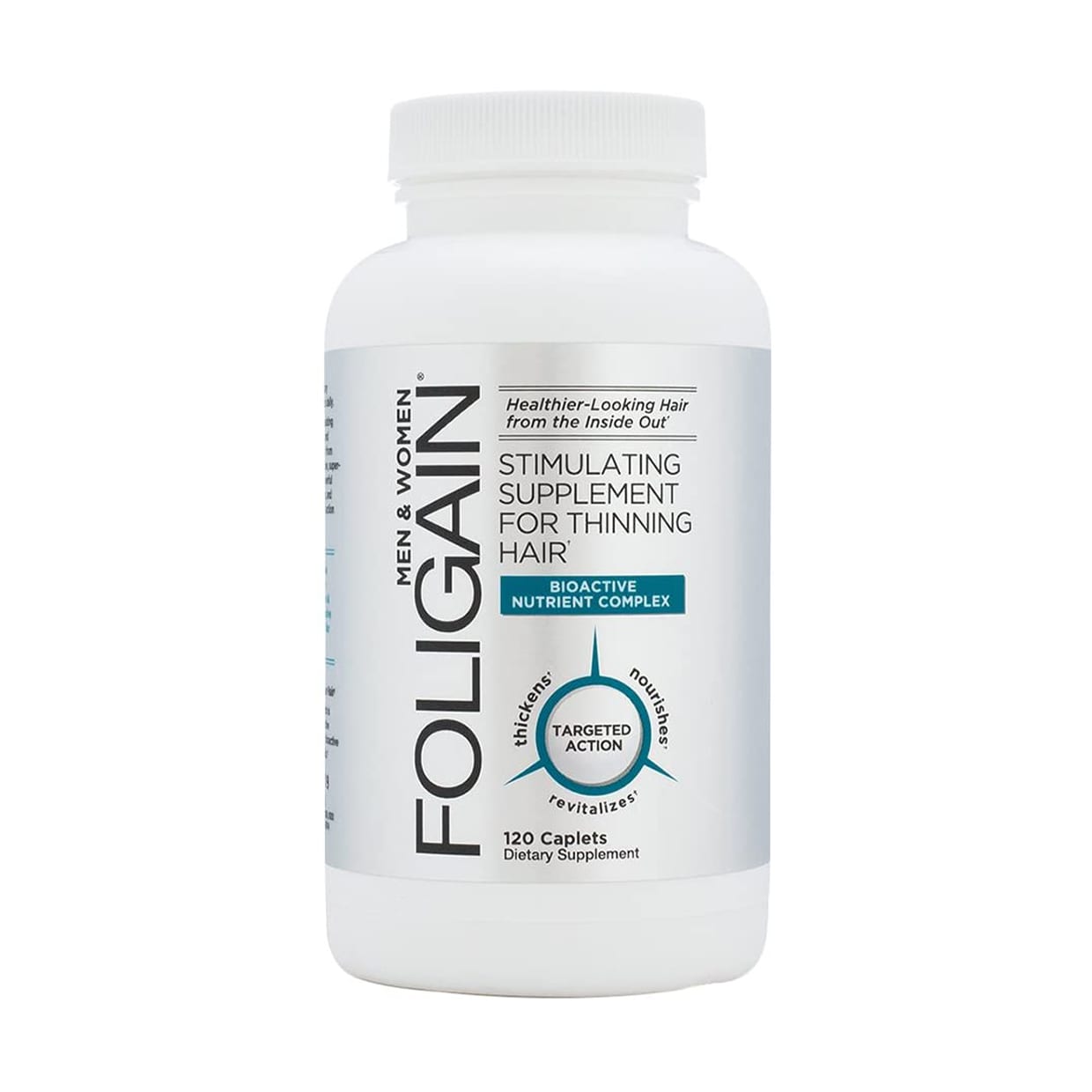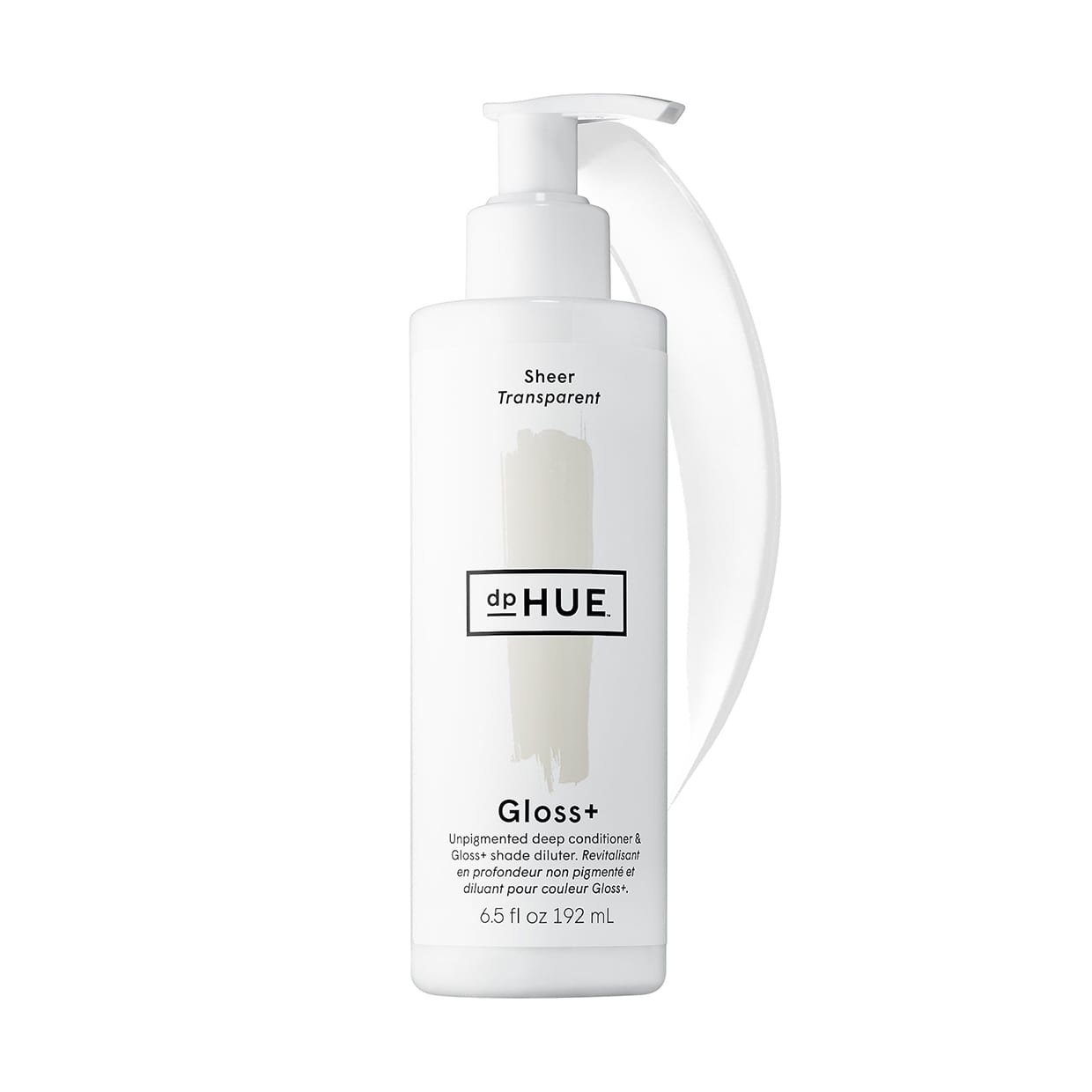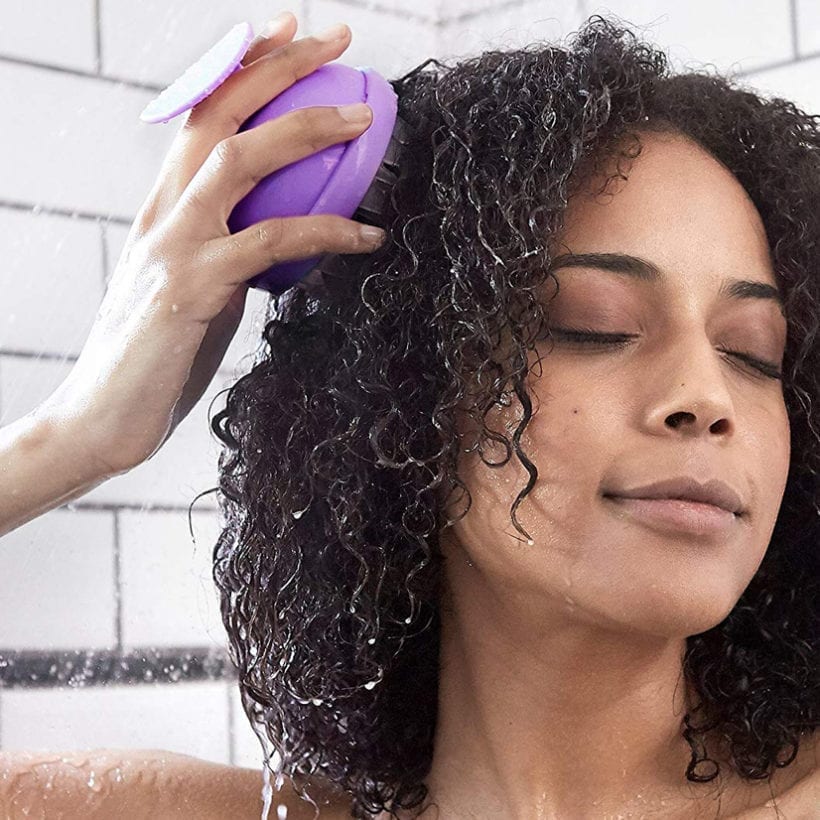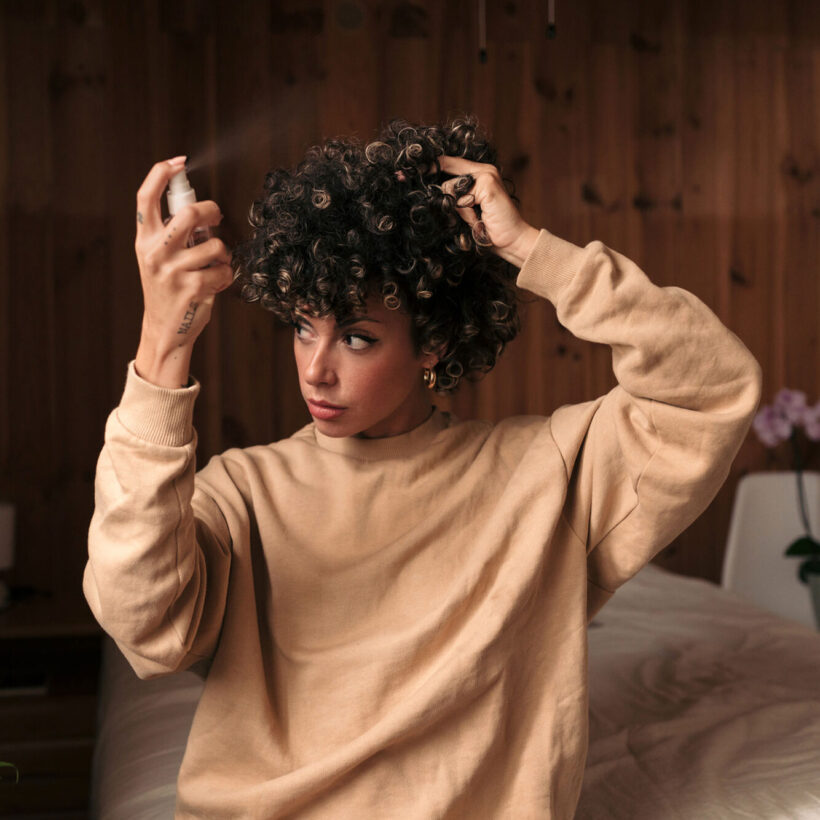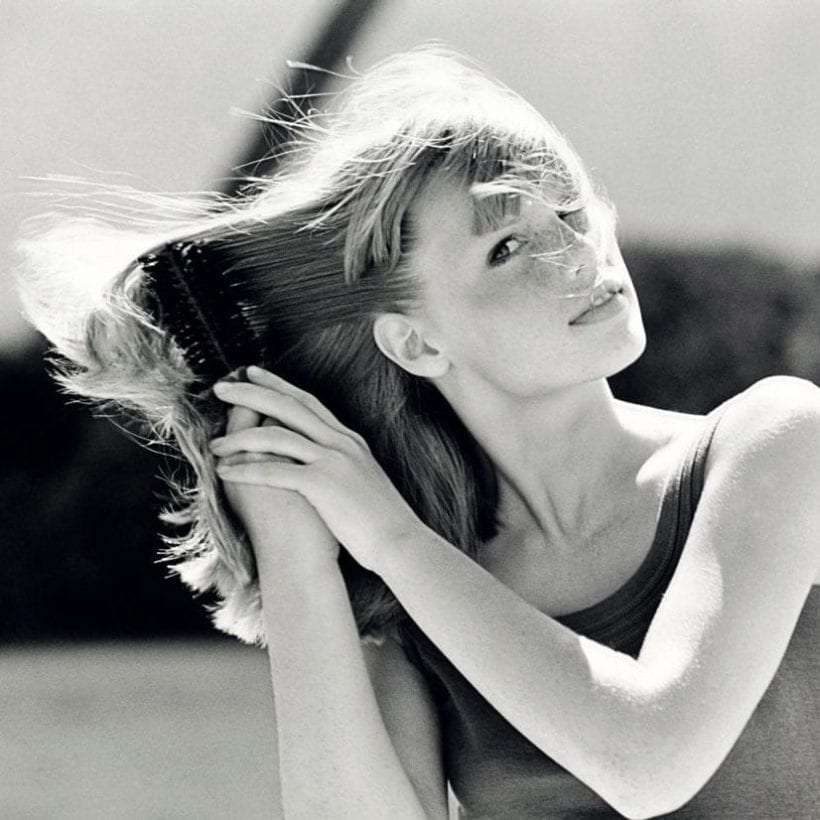There are many reasons you might want to quit dyeing your hair. It could improve your hair’s health, save you money and reclaim your time. Or, simply put, your favorite salon is still closed thanks to a certain global pandemic. No matter your reasoning, going back to your natural color is easier said than done. If there was such a thing as a magic beauty wand, we would want one specifically for this. But it does not have to be an awkward process as long as you level-set expectations. Below are all our experts’ best tips on dealing with the transition.
Work with a professional colorist
It might be tempting (and seemingly more cost-effective) to reach for your closest box of at-home dye to match your natural shade. If you are aiming to subtly adjust the tone, a box dye should be fine if you have the experience. However, if you are making a more drastic change, box dyes do not consider your hair’s unique porosity, texture and color history. This means you risk a splotchy or uneven look that could cost you more time, money and damage in the long run if you need to fix it. A professional colorist will help you come up with a game plan. Salons like Warren Tricomi are offering complimentary 15-minute video chats with a colorist to help you achieve your results at home. They can even create a hair color kit that will be customized to your unique texture and hair goals.
Box dyes do not consider your hair’s unique porosity, texture and color history.
Prepare photos
Show your colorist a picture of your natural hair color and have an honest conversation about what to expect, says Stephanie Brown, master colorist at IGK Salon in New York. It also helps ensure that nothing gets lost in translation. “People use different words to describe color; what’s golden to some is neutral to others,” she adds. If possible, bring photos with your hair in the various shades it has been in the past so you can discuss what works best during your transition.
Make sure your colorist knows your hair color history
The color processes in your hair from years ago can affect the game plan your colorist might have for you. Even if you have successfully masked a bad bleach job or you have perfected the art of box dyes, your colorist will want to know all that information in order to properly mix a formula that will not cause breakage or bad interaction.
Understand that it will take patience
“Don’t expect it to happen in one visit. Know that it is going to take time. If you are worried about damage, express that to your colorist so you can both have a clearer plan of what’s going to happen,” says Brown. Ask for their recommendations for at-home products that can help with the transition period until you get back to your natural color. “You can also try hair products that help your hair grow faster, like Foligain’s Stimulating Supplement that has biotin and saw palmetto extract, which encourages growth,” says Brown.
So here is what you can expect from the process:
If you have a few highlights…
Transitioning to your natural shade should be relatively easy if the majority of your hair is already your natural color. “You can opt for just a gloss in a slightly darker shade to help blend the color,” says Brown. “Add in lowlights in addition to a gloss to help blend the colors even further,” she says. Or, simply grow out your highlights and embrace an ombré style.
If you are going back to gray…
Unfortunately, having your hair dyed to match your natural gray color is really hard to do. “The best way to grow out your grays is to add lowlights. This helps blend out the demarcation lines between any hair colored through a single-process color (a color that’s done in one step) and the natural grays,” says Brown. You can also consider rocking a shorter ‘do so that the growing out process doesn’t have to take as long.
If you went lighter…
Going back to your natural dark shade definitely will not be a one-step process. “Before doing anything, it’s best to cut off the ends as they are the most porous from dyeing. Otherwise, your ends will pick up too much of the new hair dye and cause it to look muddy,” says Brown.
If you have been lightening your hair, there is a good chance you are dealing with some damage from bleach, which means that the darker pigment may not adhere evenly. It can turn out dull in some places and oversaturated in others. To compensate, your stylist will likely need to use a filler. A filler helps even out the porosity of your hair cuticles so the color goes on as evenly as possible.
“A filler consists of what underlying pigments a dark color has, mostly red and gold,” explains Kali Ferrara, a hairstylist and colorist in New York. “When lightening hair, you lighten them past the red and yellow stages of the hair, so to properly return to your natural color, these underlying pigments must be present. After a filler is applied (don’t be alarmed, it will look crazy) then your colorist will formulate to your proper depth and tone to bring you back to your natural color.”
If you went darker…
“It’s best to do this gradually when you’re returning to lighter natural hair color. Let the hair grow in and get highlights every few months until you’ve reached the shade you want. Use purple shampoo if you’re a lighter blonde and a blue shampoo if you’re a warmer, buttery blonde at home to keep the hair from getting too brassy. If you are in a hurry to get back to blonde, you can opt to highlight your hair every few weeks, but it is more damaging to your hair,” says Brown. It’s all about baby steps to preserve the health of your hair.
If you went pastel…
Most likely your hair was bleached to get your pastel or rainbow hair color vibrant so you can’t just dye right over it. “You have to strip the pastel color out of your hair first, but that’s pretty easy for colorists to do,” says Brown. “Then you can add a gloss if your hair is already pretty light, or if you’re going back to brunette, layer a warm tone first to prevent the hair from getting too inky.”
If you are already pretty close to your natural color…
“You might be able to just let it grow out naturally,” says Brown. Or better yet, get a gloss or toner every few months to eliminate any root lines.
You might not like your natural color at first
Be prepared for the change to feel drastic and it will take some time to get used to, especially if you have had an entirely different hair color for a long time. “I often recommend a few highlights around the face to reduce shell shock,” says Ferrara. “These will grow out and become more natural-looking as time goes on.”
Schedule a follow-up gloss
In this appointment, your stylist will apply a temporary gloss treatment that will not only add shine, but it will color correct your hair. For example, it can correct yellow tones that might make highlights look brassy. You can also use a hair gloss at home, like the ones by dpHUE, but make sure you check with your colorist about which option is best for your current color.
Do not forget your brows
If your brows are now much darker than your natural side, consider also tinting or dyeing them to open up your face. If your brows are now lighter, you can easily fill them in with a brow pencil until things sync up with your new hair color.
We only recommend products we have independently researched, tested, and loved. If you purchase a product found through our links, Sunday Edit may earn an affiliate commission.
